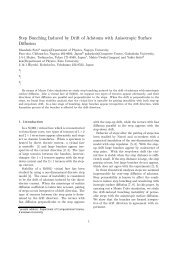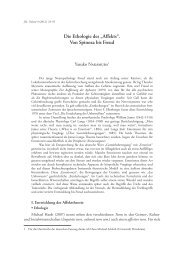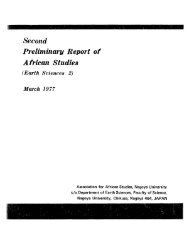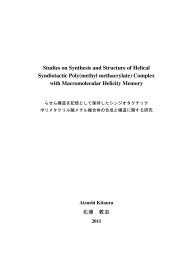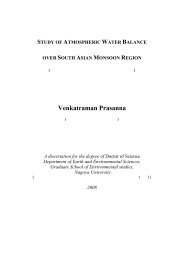k9254.pdf
k9254.pdf
k9254.pdf
You also want an ePaper? Increase the reach of your titles
YUMPU automatically turns print PDFs into web optimized ePapers that Google loves.
which corresponds to the chain length, can be easily manipulated. The living nature was also<br />
probed by examining the relation between conversion and the thickness (Figure 2-8 (c)). These<br />
observations demonstrate that the growth of the polymer chains in the solution and from the<br />
surface is a living or controlled process.<br />
From the data in Figure 2-8 (b), graft density, σ, can be determined from the molecular weight<br />
of the polymer chain, Mn, and the corresponding membrane thickness, L, by the equation, 14<br />
σ = LρNA/Mn<br />
where ρ is the mass density of PNIPA (1.042 g/cm 3 ) and NA is Avogadro‘s number. The values<br />
of σ for all samples are listed in Table I.<br />
Table I. Values of graft density of the<br />
polymer brushes<br />
Reaction time (h) 0.5 1 2 4 8<br />
The graft densities varied within a range from 0.45 to 0.5 chain/nm 2 , where polymer chains<br />
behave as extended brushes, meaning that polymer chains are highly extended states regardless<br />
of the polymerization time.<br />
σ (chain/nm 2 ) 0.45 0.5 0.46 0.5 0.48<br />
To determine the behavior of thermo-sensitive wettability of the PNIPA brushes, contact angle<br />
must be one of the effective analytical methods. Static contact angle of air bubble under the<br />
polymer brushes of different samples as a function of temperature is shown in Figure 2-9. In the<br />
case of all five samples with different thickness, trend of the curve is almost the same. With<br />
38



